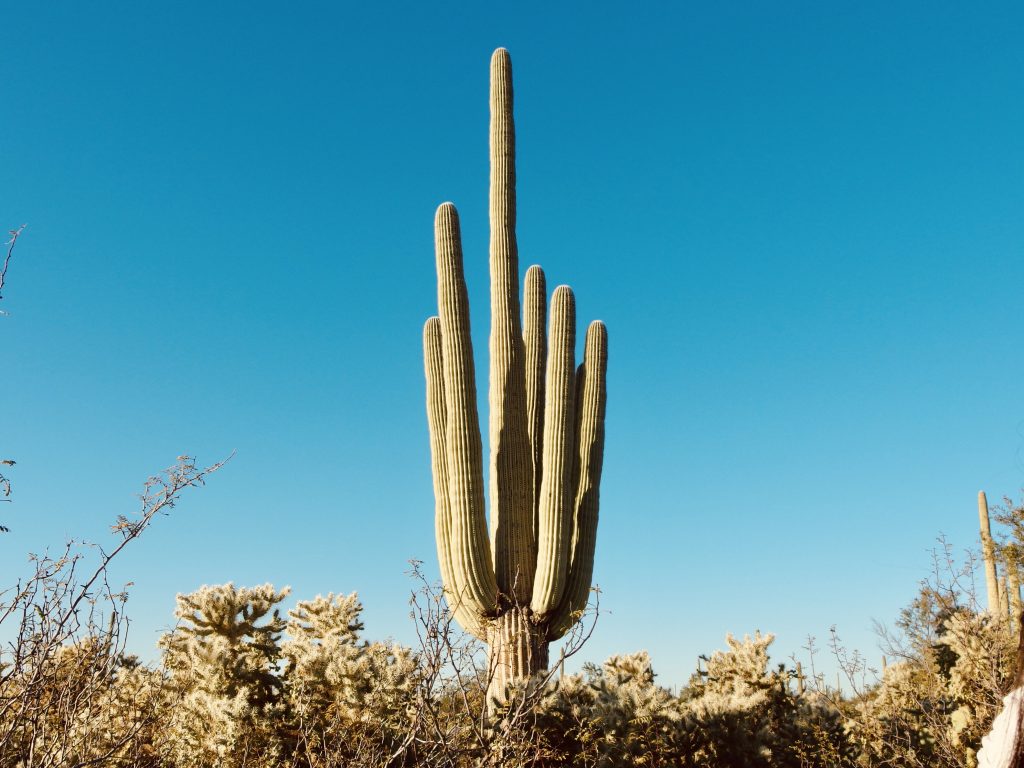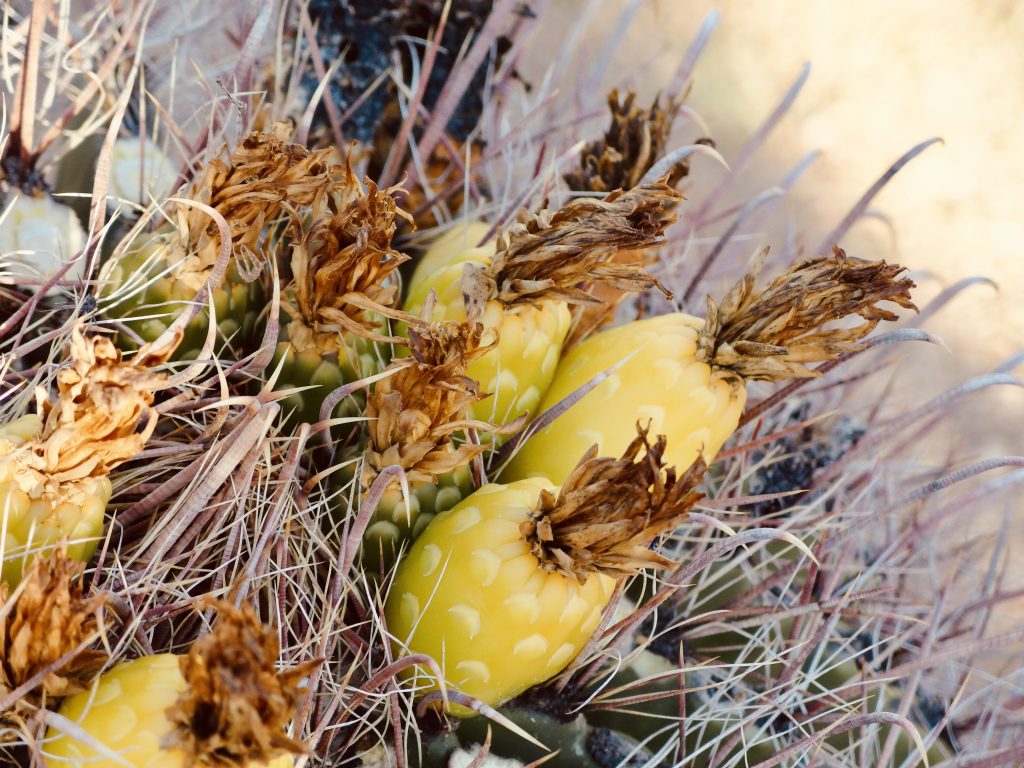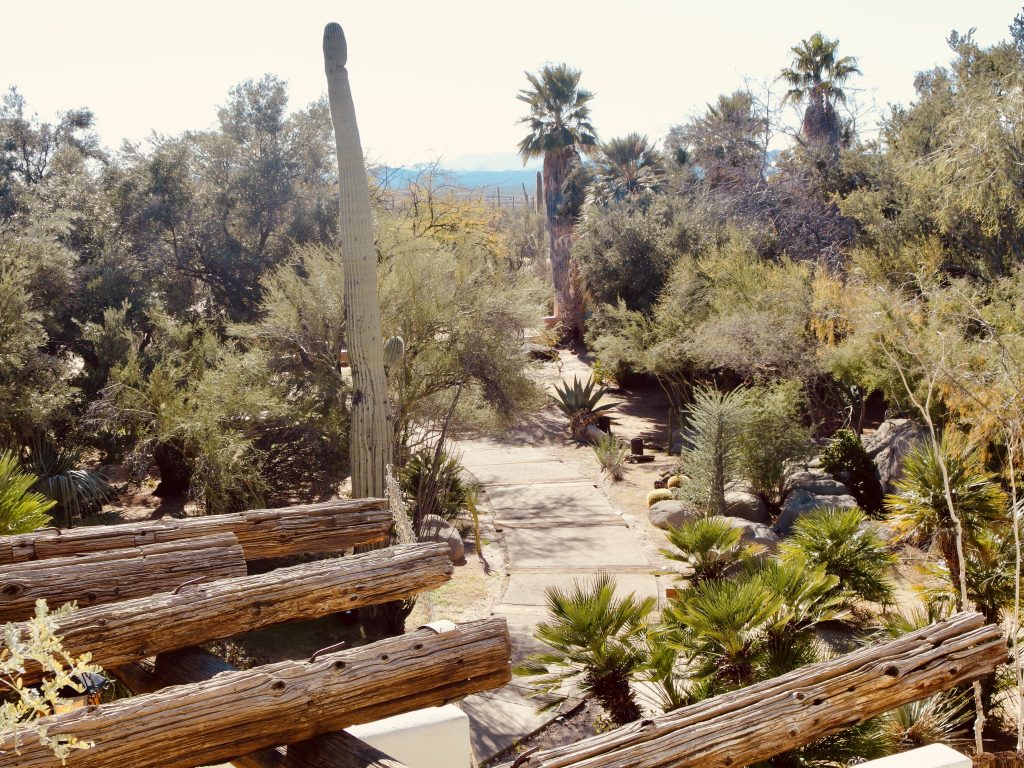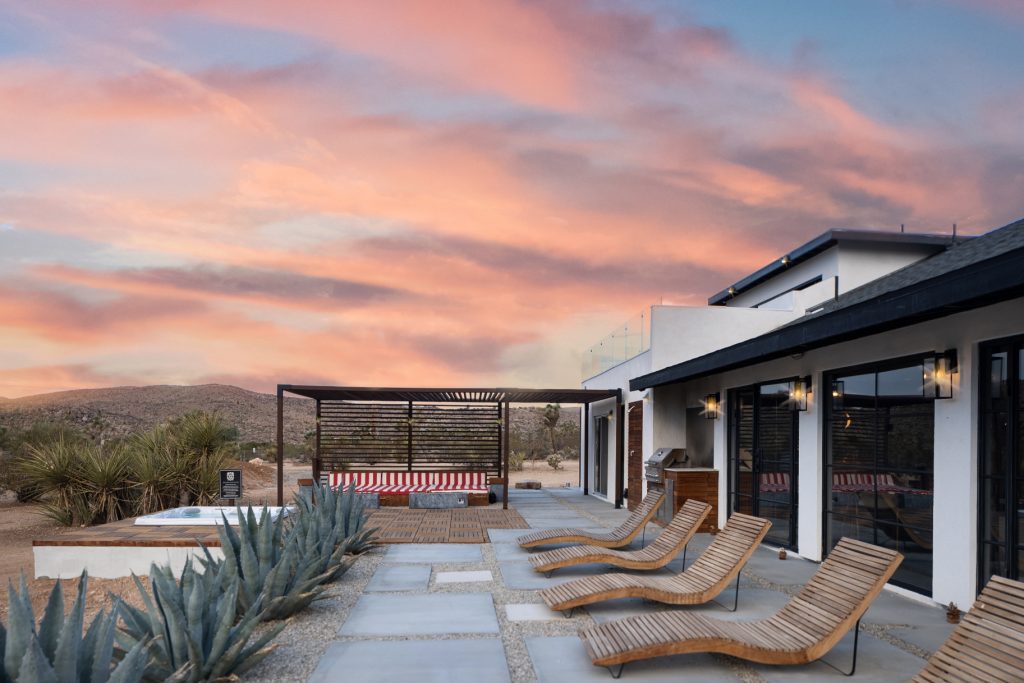The Natural Beauty of Posada by The Joshua Tree House
Beautiful organic oddities, distinct aromas, and biodiversity on 38 acres in Tucson, Arizona
Rich and Sara Combs—the husband and wife design duo behind Posada by The Joshua Tree House (Tucson, AZ) and the aptly named The Joshua Tree House (Joshua Tree, CA)—have been together since high school, but their passion for the rich landscape of the rural western parts of the US didn’t surface until a road trip across the country (from San Francisco to NYC) after leaving jobs in web design in 2013. The Connecticut-raised pair have an unforced, gentle essence and it translates into their interior and hospitality design projects. It’s also mirrored in their properties and the land upon which they sit.
Their newly opened Posada property (which sits on the border of Saguaro National Park, though still part of Tucson) impresses with its amount of square footage and its labyrinthian combination of public and private space. From the Saguaro Suite (with two floors, a private bi-level bathroom and an incredible two-story window view) to the efficient, top-floor Yucca Room (with an adjacent patio space perfectly aligned for watching sunsets), every room will delight guests here.

Having purchased the original Joshua Tree House property in 2014, the Combs now have five years of experience—and coincidentally, three generations of inn-keeping to reference. “It’s only recently that our parents have been able to explain what we’re doing,” Rich says. “My dad, the other day, was like, ‘You’re a third-generation innkeeper.’ My family owned an inn from 1896 through 1986. My dad grew up there and my grandfather ran it. It was a cool realization, and now it’s a bit easier for them to explain to people what we’re doing.”
Though less tangible than the textural decor and the rustic, elegantly worn-in furniture and homewares, there are three distinct qualities that will strike guests: natural light abounds and the resulting shadows bounce off muted walls and natural wood shelves and tables; a signature aroma (a combination of dried herbs and flowers, a signature desert musk, and fragrances from P.F. Candle Co) permeates but harmoniously coexists with the smell of a wood-burning fire or freshly made local coffee; and an astonishingly biodiverse garden and backyard gives visitors access to fresh fruit and a spectacle of spiked growth.

“This is the reason why we moved to the desert,” Sara tells us about the incredible landscape of their property and the surrounding parks. “The first time that we came to the desert, we felt an immediate sense of peace. We were able to reset like never before. It was like a magnet; we left and immediately came back, and the whole time we were gone we were still thinking about it.”

Tucson, a city known for its dry landscape and sharp, cacti-clad ridges and cliffs, also receives over 12 inches of rainfall each year. As such, the high desert valley region (formed by four mountain ranges: the Santa Catalinas, Rincons, Santa Ritas, and Tucson) sprouts citrus, olive and other fruit trees as well as plants, lush green trees and a wide variety of cacti during its typical blooming seasons. Plenty linger through the winter months.

The former director of Tucson’s Arizona-Sonora Desert Museum oversaw the building of Posada by The Joshua Tree House and the landscape architecture of its 38-acre plot. Using the latter as a personal experiment, the Posada property became a testing ground for many of the most common architectural and zoological landscape features of the past 50 years—plus other interesting and somewhat unconventional plantings.
“We’re pretty sure this was initially intended to be housing for the people who worked at the Desert Museum down the road,” Sara says. “If you do visit there, there’s a lot of crossover with architecture with plants. That’s why we have so many weird non-native plants in the garden.”

“For some of the plants in this garden, the only other spot that you could find it, either in Arizona or the US, could actually be at the Desert Museum,” Rich adds.

Professionals that have popped in to assess the life found at Posada have agreed that plenty of it can only be found in the museum. For the rest of the property, the pair plans to work with artist and botanist Trevor Mock, Rosie Crocker of Sonoran Rosie, and neighbors to decipher and catalog their findings. Mock started with a detailed portrait of a trio of agave plants behind Posada’s main bar inspired by an aging, now-horizontal agave plant found along the pathway to the front door of the property. It sits there, in likely its 24th or 25th year, amidst 150-year-old cacti and flourishing creosote brushes, as a testament to the Posada’s rich connection and commitment to the nature around it.
Images by Evan Malachosky















































